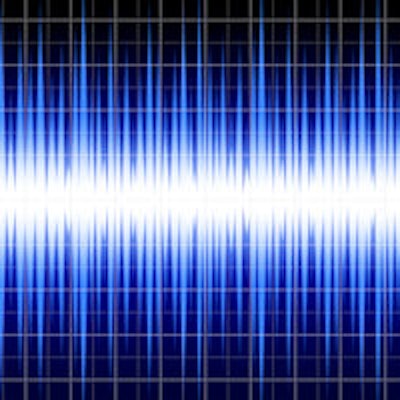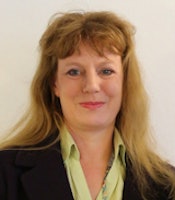
How much of an effect do voice recognition programs have on radiologists' efficiency? How can the technology be improved? The jury is still out on these systems, it seems, and some health IT specialists remain convinced there is significant room for improvement.
Supporters of voice recognition tend to have had direct experience of a positive uptick in their own -- and their department's -- reporting efficiency, as well as an overall smooth transition period from digital dictation to implementation of new programs.
Dr. Neelam Dugar, a consultant radiologist at Doncaster and Bassetlaw Teaching Hospitals National Health Service (NHS) Foundation Trust in the U.K. and informatics adviser to the Royal College of Radiologists, has been fully supportive of voice recognition since 2013, when systems were first rolled out as a module in the new RIS. Before that time, she admits to a certain degree of skepticism.
 Careful use of voice recognition can boost reporting efficiency, says Dr. Neelam Dugar.
Careful use of voice recognition can boost reporting efficiency, says Dr. Neelam Dugar."We wanted an easy transition and, therefore, made sure there was overlap so that radiologists could still send dictations for transcription while they got used to the new voice recognition system," she told AuntMinnieEurope.com. "However, 90% moved to voice recognition within a week because they found the technology useful and simple to use."
The swift adoption came as a surprise to Dugar. Voice recognition brought about the ability to view images while creating the text report and had consequent time-saving advantages that are not possible with digital dictation. Now, she and the rest of the department use only voice recognition. Voice recognition also caused a reorganization of administrative support; medical secretaries who used to transcribe dictations are now deployed for other tasks such as supporting radiologists with fail-safe alert communication.
"Now 100% of our reports are voice-recognized," she noted. "This has hugely improved emergency turnaround. A CT report is often available within 30 minutes of an emergency CT scan being requested."
Furthermore, radiologists didn't have secretarial support over the weekend, and previously, verbal reports were communicated. Now reporting can be undertaken efficiently during weekends too.
The biggest number of complaints about the new RIS stem from voice recognition, however, according to Dugar. The system has a tendency to insert "the" and "a," and the radiologist doesn't always notice these insertions at the time, but simple techniques can cut down on mistakes. For example, some radiologists will leave voice recording on while they are looking at images, and the system picks up on breathing and converts it into words.
"You need to be disciplined when using such systems. Turn it off while you are looking at images, and speak clearly," she advised.
Since 2013, there have been very few mistakes that changed the meaning of a report drastically and that might have affected patient care. The most notable occurred in a report for a pathology of "20 mm," which, through a voice recognition error, became "20 cm." In this instance, the clinician spotted the mistake immediately.
"We need fresh eyes to spot the mistakes," Dugar said. "However the use of medical secretaries to proof check the reports comes at a huge cost, and this isn't realistic."
Besides the additional financial cost, human proofing also generates additional time delays. Adding another bottleneck of up to two days when proofing is unlikely to catch many drastic mistakes seems excessive.
Issues to address
Dr. Catherine Mandel, an MRI radiologist at Swinburne University of Technology and councillor for the Faculty of Clinical Radiology at the Royal Australian and New Zealand College of Radiologists (RANZCR), does most of her computer work, including writing emails, through voice recognition. The best voice recognition she has used is the one built into her Apple Mac computer; she thinks professional packages don't always work well.
 Dr. Catherine Mandel uses voice recognition for all her computer work.
Dr. Catherine Mandel uses voice recognition for all her computer work."Accuracy is paramount as even minor errors, such as missing the words 'no' or 'not,' could be catastrophic," she said. "I'd be prepared to put up with some time to train the system and for it to be a bit slower if it were more accurate."
The best way to get radiologists to accept voice recognition is to have a supported transition so that there is medical typist backup to help correct bad transcriptions. She thinks this is critical.
"Don’t just turn off support and expect it to work," Mandel said. "It will be clear when audio typists are no longer adding value. An example of a bad system we were forced to use: My touch-type capable colleagues typed all their reports and never dictated anything. That was a dedicated radiology voice recognition package. It shows that employers and vendors need to work with us."
It is well known that radiologists read what was said and not what was transcribed, and this introduces a new type of error into reports, as opposed to dictate, send off, get it back typed to proofread, and see the transcription errors, she explained.
Also experienced in using voice recognition modules is Dr. Jacob Visser, PhD, a musculoskeletal radiologist heading the imaging IT and value-based imaging program at Erasmus University Medical Center in Rotterdam, the Netherlands. He has spotted a few key issues that need to be addressed, including seamless integration of structured reporting tools into the radiologist workflow, developing a modular input template, making sure that the output is in a readable format for the referring physician, finding an intelligent way to store report data, and version management of the templates.
Visser, who also investigates how artificial intelligence (AI) can affect radiology practice and optimize patient outcomes, believes that collaboration is key.
"My idea would be that national and international radiology societies should set the standards," he said. Then the vendors can develop, in close collaboration with radiologists, the most appropriate solution."
But this may be easier said than done, according to Dr. Erik Ranschaert, PhD, president of the European Society of Medical Imaging Informatics (EuSoMII). He believes that without drastic changes, voice recognition implementation will remain heterogeneous and ineffective.
The hospital where he worked in 2000 was already equipped with G2 Speech, the market leader in the Netherlands, but it took almost a decade to move away from transcription to using solely voice recognition due to resistance from radiologists, he said. Until then, the system had served more as a digital voice recorder and the hospital paid for transcriptions. This reliance on secretaries delayed the process of voice recognition adoption in the Netherlands, while in Belgium adoption was swifter as it was the radiologists themselves who paid for transcriptionists.
The problem is deeper than merely slow adoption, residing in a lack of structured reporting, according to Ranschaert.
 Radiologists need to lead the way with structured reporting and voice recognition integration, Dr. Erik Ranschaert, PhD, believes.
Radiologists need to lead the way with structured reporting and voice recognition integration, Dr. Erik Ranschaert, PhD, believes."In my experience, nothing has changed in 20 years, and we are still dictating," he said. "Most radiologists are still using very basic report templates that only include the patient's name, exam date and title of exam, and some clinical information and a question, but that's where the structured reporting usually ends."
Furthermore, physicians dictate plain text that can vary drastically in content and format, Ranschaert noted. While everyone seems to cite the advantages of structured reporting, there is insufficient collaborative effort between industry and radiologists -- just homemade solutions, such as the one at Erasmus University Medical Center.
Currently at Elisabeth-TweeSteden Hospital (ETZ) in Tilburg, the Netherlands, there are report templates for some diseases such as colorectal cancer, but most input is manual, and radiologists have to add and delete sentences. Specifically, there is no automatic integration of measurement data, he continued.
Integration efforts
Some companies are working on integrating structured reporting into speech recognition tools so that measurements can be automatically integrated, according to Ranschaert. Several solutions are available via a web-based interface -- for example, Smart Radiology -- but the reports generated by these tools are not automatically incorporated into the PACS, RIS, or electronic patient record, and therefore a copy-paste technique is still being used.
"The question we should ask is: Why are we slow to adopt structured reporting into speech recognition -- why is industry not pushing it? Because of AI, we will need all reports to be structured to use the data to train algorithms," he noted. "With prosaic text, it is difficult to make the link between image and findings."
Using solutions such as natural language processing (NLP) to analyze prosaic text to find words linked to diagnosis and image findings is far from ideal, as variations still exist and can be difficult to interpret. Instead, structured reporting with coding is needed to improve the quality of data.
And it's not just industry's fault, he stressed. Industry is not following because radiologists are not leading the way.
"We have to reevaluate the tools we have at hand and how to use them to add value to our services, certainly in the era where AI could assist us in improving diagnostics and patient care," Ranschaert said. "But this means changing habits and relearning things."
According to Dugar, as AI takes on more of a role in preanalysis, reports will need to become increasingly structured not just so that algorithms can learn from the data but also because the same programs will be creating automatic structured reports -- with a disclaimer about the sensitivity and specificity of the applied algorithms, allowing radiologists to make the final call.
"There will be a symbiotic relationship between computers and humans," she said. "AI implementation will foster structured reports generated by the computer, and humans will issue a structured narrative to make it personal to the patient. This will require adapted voice recognition systems and industry needs to take this on board."



















